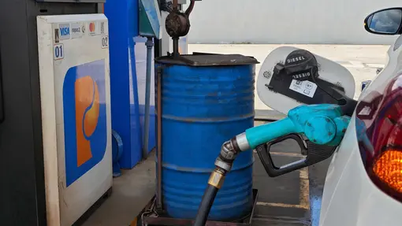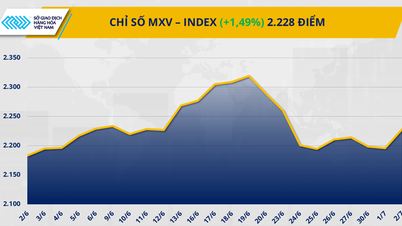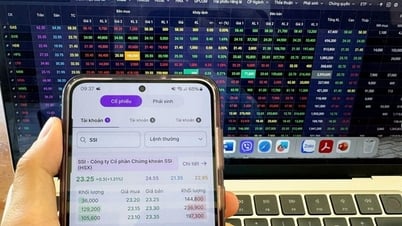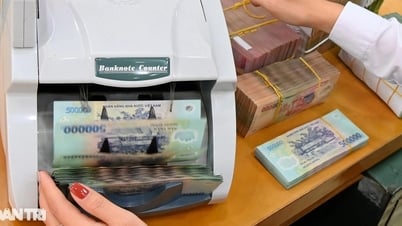Giá xăng dầu tuần này đã quay đầu lao dốc bất chấp lưỡng viện Mỹ thông qua dự luật trần nợ. Giá dầu Brent dừng ở mức 76,13 USD/thùng.
Giá dầu thế giới
Theo Reuters, kết thúc phiên giao dịch cuối cùng của tuần, giá dầu tăng hơn 2% sau khi Quốc hội Mỹ thông qua thỏa thuận trần nợ giúp ngăn chặn tình trạng vỡ nợ của chính phủ tại quốc gia tiêu thụ dầu mỏ lớn nhất thế giới. Sự leo dốc của giá dầu cũng chịu tác động bởi dữ liệu việc làm của Mỹ, thúc đẩy hy vọng về khả năng tạm dừng tăng lãi suất của Cục Dự trữ liên bang Mỹ (Fed).
 |
| Mức tăng mạnh ở phiên giao dịch cuối của tuần không đủ để kéo giá xăng dầu tuần này tiếp tục leo dốc. Ảnh minh họa: Reuters |
Giá dầu Brent giao tháng 8 tăng 1,85 USD, tương đương 2,5%, lên mức 76,13 USD/thùng. Giá dầu WTI của Mỹ tăng 1,64 USD, tương đương 2,3%, lên mức 71,74 USD/thùng. Đây là mức đóng cửa cao nhất của dầu WTI kể từ ngày 26-5 và dầu Brent kể từ ngày 29-5.
Tuy nhiên, tính cả tuần, cả hai mặt hàng dầu chuẩn đã giảm khoảng 1%. Đây là tuần giảm đầu tiên sau hai tuần tăng giá liên tiếp.
Thượng viện Mỹ đã thông qua dự luật trần nợ công, sau khi dự luật này được Hạ viện thông qua. Việc lưỡng viện thông qua dự luật này sẽ giúp ngăn chặn một vụ vỡ nợ có thể làm rung chuyển thị trường tài chính thế giới.
Reuters cho biết, có thể Fed sẽ bỏ qua đợt tăng lãi suất trong tháng 6, lần đầu tiên sau hơn một năm, sau dữ liệu việc làm mạnh của Mỹ. Trong tháng 5, bảng lương phi nông nghiệp đã tăng 339.000. Bảng lương tháng 3, tháng 4 được điều chỉnh tăng 93.000.
Hiện mọi con mắt đều đổ dồn vào cuộc họp ngày 4-6 của OPEC+. Hồi tháng 4, nhóm này đã bất ngờ thông báo cắt giảm sản lượng thêm 1,16 triệu thùng/ngày. Việc cắt giảm này đã khiến giá dầu liên tục được giao dịch ở mức giá dưới mức cắt giảm trước đó của OPEC+.
Ba nguồn tin của OPEC+ cho Reuters biết rằng đang có tranh luận về việc cắt giảm sản lượng dầu bổ sung trong số các lựa chọn khả thi..
Edward Moya, nhà phân tích thị trường cấp cao tại Công ty phân tích và dữ liệu OANDA cho biết: “Không ai muốn bán khống dầu thô khi tham gia cuộc họp OPEC+ vào cuối tuần. Các nhà giao dịch không bao giờ nên đánh giá thấp những gì Saudi Arabia sẽ làm và tận dụng trong các cuộc họp của OPEC+”.
Saudi Arabia là nhà sản xuất lớn nhất trong OPEC. Bộ trưởng Năng lượng nước này từng cảnh báo những người bán khống đặt cược giá dầu giảm phải “coi chừng” thiệt hại.
 |
| Giá xăng dầu trải nghiệm tuần giảm đầu tiên sau hai tuần tăng liên tiếp. Ảnh minh họa: Reuters |
Trong một diễn biến khác, tại Mỹ, các công ty năng lượng trong tuần này đã cắt giảm số lượng giàn khoan dầu hoạt động nhiều nhất kể từ tháng 9-2021. Cụ thể, số lượng giàn khoan dầu khí, một chỉ báo sớm về sản lượng trong tương lai, đã giảm 15 giàn xuống còn 696 giàn trong tuần tính đến ngày 2-6, mức thấp nhất kể từ tháng 4-2022. Tổng số giàn khoan đã giảm tuần thứ năm liên tiếp.
Các công ty khoan dầu của Mỹ đã cắt giảm hoạt động khoan trong nhiều tháng do giá dầu thô của Mỹ giảm 11% và giá khí đốt tự nhiên giảm 51% kể từ đầu năm.
Giá xăng dầu trong nước
Giá bán lẻ xăng dầu trong nước ngày 3-6 cụ thể như sau:
|
Xăng E5 RON 92 không quá 20.878 đồng/lít. Xăng RON 95 không quá 22.015 đồng/lít. Dầu diesel không quá 17.943 đồng/lít. Dầu hỏa không quá 17.771 đồng/lít. Dầu mazut không quá 14.883 đồng/kg. |
Giá xăng dầu trong nước nói trên đã được liên Bộ Tài chính - Công Thương điều chỉnh tại kỳ điều hành giá ngày 1-6 với giá xăng tăng cao nhất là 516 đồng/lít và giá dầu giảm cao nhất là 275 đồng/lít (kg).
Theo liên Bộ, thị trường xăng dầu thế giới chịu ảnh hưởng của nhiều yếu tố khiến giá xăng dầu tăng, giảm đan xen. Tại kỳ điều hành này, liên Bộ quyết định giữ nguyên mức trích lập Quỹ bình ổn giá đối với tất cả các mặt hàng xăng dầu như kỳ trước và tiếp tục không chi Quỹ bình ổn giá đối với tất cả các mặt hàng xăng dầu.
Tính từ đầu năm đến nay, giá xăng đã trải qua 15 lần điều chỉnh, trong đó 9 lần tăng, 5 lần giảm, và 1 lần giữ nguyên.
MAI HƯƠNG
Nguồn


























































![[Tin tức Hàng hải] Bộ Tài chính nhắm mục tiêu vào các mạng lưới đa dạng tạo điều kiện thuận lợi cho thương mại dầu mỏ của Iran](https://vphoto.vietnam.vn/thumb/402x226/vietnam/resource/IMAGE/2025/7/14/43150a0498234eeb8b127905d27f00b6)












































Bình luận (0)